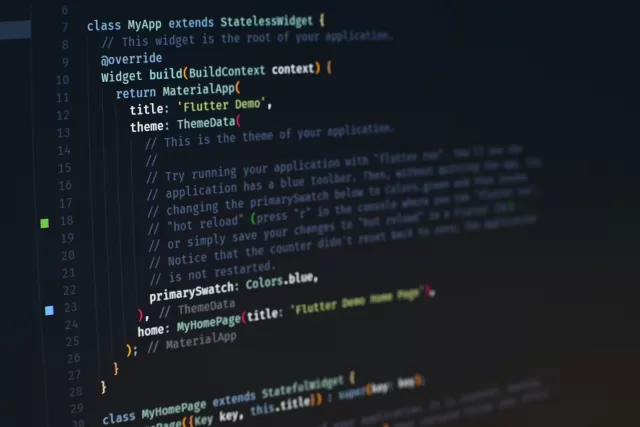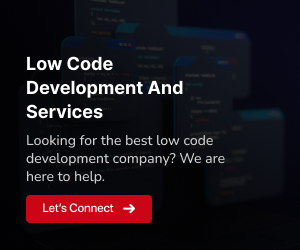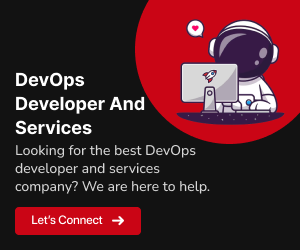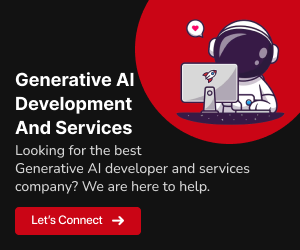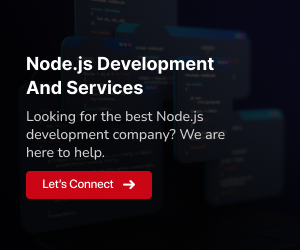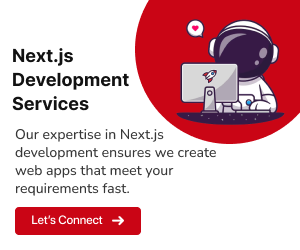Commencement to Cross-Platform Development:
Cross-platform development has become increasingly important in the software development landscape, enabling developers to create applications that run seamlessly on multiple operating systems. This approach is particularly valuable in today’s diverse device ecosystem, where users access applications on various platforms such as iOS, Android, and web browsers. This section overviews cross-platform development and explores the key frameworks used in this domain.
Overview of Cross-Platform Frameworks:
Cross-platform frameworks serve as a foundation for developing applications that can be deployed across different platforms without significant modification. These frameworks provide a set of tools, libraries, and guidelines that streamline the development process. Some prominent cross-platform frameworks include:
React Native:
A JavaScript framework developed by Facebook that allows developers to build mobile applications using React and native components.
Flutter:
An open-source UI software development toolkit created by Google, enabling the development of natively compiled applications for mobile, web, and desktop from a single codebase.
Xamarin:
A framework by Microsoft that allows developers to build cross-platform apps using the C# programming language, sharing a substantial amount of code between platforms.
PhoneGap/Cordova:
A mobile application development framework that utilizes web technologies (HTML, CSS, JavaScript) to create cross-platform apps with a single codebase.
Each framework has its strengths and weaknesses, and the choice often depends on the specific requirements of the project, the target audience, and the developer’s expertise.
Importance of Choosing the Right Framework:
The selection of a cross-platform framework is a critical decision in the development process. The right framework can significantly impact factors such as development speed, performance, and maintenance. Considerations for choosing the appropriate framework include:
Performance:
Evaluate the framework’s performance on different platforms to ensure a smooth user experience.
Community and Support:
A strong community and active support ensure that developers can find solutions to challenges and stay updated with the latest developments.
Integration Capabilities:
Check how well the framework integrates with third-party libraries, APIs, and native functionalities of each platform.
Development Speed:
Assess the development speed and ease of learning for the chosen framework to meet project deadlines efficiently.
Scalability:
Consider the scalability of the framework to accommodate future enhancements and changes in the application.
Choosing the right cross-platform framework is a strategic decision that can significantly impact the success of a project. By carefully evaluating the requirements and features of each framework, developers can make informed decisions that align with the project’s goals and constraints.
Looking to make an informed choice between Dart and NodeJS for your backend in 2024? Dive into the details and explore the pros and cons of each with our blog: “Dart vs. NodeJS for your Backend: Which one to choose in 2024?”. Make the right decision for your development needs!
Introduction to Flutter:
Flutter, developed by Google, stands out as a robust open-source UI software development toolkit renowned for its ability to create natively compiled applications across various platforms from a single codebase. This section delves into the intricacies of Flutter, exploring its framework, key features, strengths, and diverse applications.
Flutter Framework Overview:
Flutter’s foundation is built on the Dart programming language, known for its simplicity and efficiency. The framework incorporates a comprehensive set of pre-designed widgets, facilitating the creation of consistent and visually captivating user interfaces. One standout feature is the hot reload functionality, enabling developers to instantly view the impact of code changes, fostering a highly iterative and productive development process.
Key Features and Strengths:
Flutter’s popularity stems from a myriad of features that enhance the development experience:
Single Codebase:
Flutter’s hallmark is the ability to develop applications for multiple platforms, including iOS and Android, using a single codebase. This not only streamlines development but also reduces maintenance overhead.
Expressive UI:
With an extensive library of customizable widgets, Flutter empowers developers to craft highly expressive and visually pleasing user interfaces, ensuring a delightful user experience.
Hot Reload:
The hot reload feature is a game-changer, allowing developers to experiment, iterate, and fix bugs rapidly. Changes made in the code are reflected instantly without the need to restart the application.
Performance:
Flutter’s native compilation to ARM code ensures high performance, resulting in smooth animations and a responsive user interface, critical for delivering a polished user experience.
Open Source:
Being an open-source framework, Flutter benefits from a vibrant and engaged community. Continuous contributions and updates ensure that the framework remains cutting-edge and well-supported.
Use Cases and Applications:
Flutter’s versatility extends its application to various scenarios, making it suitable for a wide range of use cases:
Mobile Apps:
Flutter is widely adopted for mobile application development, offering a consistent user experience on both iOS and Android platforms. Its single codebase approach accelerates development and eases maintenance.
Web Applications:
Flutter’s extension to the web allows developers to use the same codebase to build responsive and interactive web applications, ensuring a unified development workflow.
Desktop Applications:
With Flutter’s desktop support, developers can create applications for Windows, macOS, and Linux. This broadens the reach of Flutter to desktop environments, maintaining consistency across platforms.
Embedded Systems:
Flutter’s adaptability makes it suitable for developing applications in embedded systems, offering a flexible solution for a diverse array of devices in sectors like IoT and smart devices.
Whether for startups, enterprises, or individual developers, Flutter’s adaptability, powerful features, and thriving community make it an excellent choice for a wide spectrum of projects, fostering a unified and efficient development process across different platforms.
Introduction to Ionic:
Ionic stands out as a popular open-source framework for building cross-platform mobile applications using web technologies. This section provides a detailed exploration of the Ionic framework, covering its overview, key features, strengths, and diverse applications.
Ionic Framework Overview:
The Ionic framework leverages web technologies such as HTML, CSS, and JavaScript to create high-quality, cross-platform mobile applications. It is built on top of Angular, a powerful JavaScript framework, and Apache Cordova, a platform for building native mobile applications using web technologies. Ionic provides a set of pre-designed UI components and tools that streamline the development process and ensure a consistent look and feel across different platforms.
Key Features and Strengths:
Ionic boasts a range of features that contribute to its popularity among developers:
Cross-Platform Compatibility:
Ionic allows developers to build applications that can run seamlessly on both iOS and Android platforms, minimizing the need for separate codebases.
Pre-designed UI Components:
The framework comes with a rich set of UI components and themes, enabling developers to create visually appealing and responsive interfaces without starting from scratch.
Accessibility:
Ionic places a strong emphasis on creating applications that are accessible to a wide range of users, ensuring a positive user experience for everyone.
Community and Support:
With a vibrant community and active support, Ionic benefits from continuous updates, bug fixes, and a wealth of resources for developers.
Integration Capabilities:
Ionic seamlessly integrates with various front-end frameworks, making it adaptable to different development preferences and workflows.
Use Cases and Applications:
Ionic’s versatility makes it suitable for a variety of use cases and applications:
Enterprise Applications:
Ionic is widely adopted for developing enterprise-level applications, offering a cost-effective solution with cross-platform capabilities.
Consumer Apps:
Many consumer-facing applications, including e-commerce, social media, and content delivery apps, leverage Ionic for its ability to provide a consistent user experience across platforms.
Prototyping and MVPs:
The framework is an excellent choice for prototyping and building Minimum Viable Products (MVPs), allowing for rapid development and testing of ideas.
Startups and Small Businesses:
Ionic’s ease of use, coupled with its cost-effective development approach, makes it a preferred choice for startups and small businesses looking to enter the mobile app market quickly.
Whether for large-scale enterprise solutions or smaller-scale projects, Ionic’s flexibility, extensive feature set, and cross-platform capabilities make it a compelling choice for developers seeking an efficient and accessible framework for mobile app development.
Performance and Responsiveness:
Ensuring optimal performance and responsiveness is crucial in delivering a positive user experience for applications. This section delves into the intricacies of performance benchmarking, responsiveness on different devices, and strategies for handling resource-intensive tasks.
Performance Benchmarking:
Performance benchmarking involves assessing and measuring the efficiency and speed of an application. It is essential to identify potential bottlenecks and areas for improvement. Common techniques for performance benchmarking include:
Load Time:
Measure the time it takes for the application to load, ensuring a swift and efficient start for users.
Flutter:
Flutter’s load time is optimized through its compiled Dart language, resulting in fast and efficient app launches.
Ionic:
Ionic’s load time is influenced by its web-based nature, offering good performance but potentially facing some trade-offs in comparison to Flutter.
Response Time:
Evaluate the responsiveness of the application to user input, aiming for quick and seamless interactions.
Flutter:
Flutter excels in response time with its compiled nature, ensuring smooth and near-native interactions.
Ionic:
Ionic provides responsive interactions, but the reliance on WebView components may introduce slight delays compared to Flutter’s more native-oriented approach.
Memory Usage:
Monitor the application’s memory usage to prevent memory leaks and optimize resource utilization.
Flutter:
Flutter’s memory usage is efficient, aided by Dart’s garbage collection and optimized code structures.
Ionic:
Ionic, being web-based, may have slightly higher memory usage compared to Flutter, but it still provides effective memory management.
Network Performance:
Assess the efficiency of network requests and data transfer, optimizing for minimal latency and fast data retrieval.
Flutter:
Flutter ensures efficient network performance, benefiting from its compiled language and native capabilities.
Ionic:
Ionic’s network performance is solid, utilizing web technologies, but may face some trade-offs compared to Flutter, especially in complex scenarios.
Regular performance benchmarking helps developers identify areas for improvement and ensures the application meets or exceeds performance expectations.
Responsiveness on Different Devices:
Ensuring responsiveness across a variety of devices is essential for catering to diverse user bases. Responsive design techniques contribute to a consistent user experience regardless of the device used. Considerations include:
Viewport and Layout:
Utilize responsive design principles to adapt the layout and viewport to different screen sizes and resolutions.
Flutter:
Flutter empowers developers to create adaptive layouts through its flexible widget system, ensuring a harmonious presentation on various devices.
Ionic:
Ionic incorporates responsive design principles, adjusting layouts based on web technologies. However, some limitations may exist compared to Flutter’s more native-oriented approach.
Media Queries:
Implement media queries in CSS to apply styles selectively based on the characteristics of the device, optimizing the visual presentation.
Flutter:
Flutter supports media queries for fine-grained control over styles, allowing developers to tailor the visual presentation to specific device characteristics.
Ionic:
Ionic relies on CSS media queries to adapt styles, providing effective control over visual presentation but may face limitations compared to Flutter’s more native-centric styling approach.
Flexible Grids:
Employ flexible grid layouts to ensure that elements on the page adjust proportionally to the screen size, maintaining a harmonious design.
Flutter:
Flutter’s widget system facilitates the creation of flexible grid layouts, allowing elements to adjust proportionally for a cohesive design across various screen sizes.
Ionic:
Ionic utilizes flexible grid layouts to maintain design harmony, offering adaptability to different screen sizes. However, some limitations may be present compared to Flutter.
Device Testing:
Regularly test the application on various devices and browsers to identify and address any responsiveness issues.
Flutter:
Flutter encourages thorough device testing, ensuring applications perform consistently across different platforms and devices.
Ionic:
Ionic emphasizes device testing to identify and address responsiveness issues. Testing on various devices and browsers is crucial for achieving a consistent user experience.
By prioritizing responsive design practices, developers can create applications that deliver a seamless experience across a spectrum of devices.
Handling Resource-Intensive Tasks:
Resource-intensive tasks, such as complex computations or large data processing, can impact an application’s performance. Strategies for handling these tasks include:
Viewport and Layout:
Utilize responsive design principles to adapt the layout and viewport to different screen sizes and resolutions.
Flutter:
Flutter excels in creating responsive designs through its flexible widget system, ensuring a harmonious presentation on various devices.
Ionic:
Ionic incorporates responsive design principles, adjusting layouts based on web technologies. However, some limitations may exist compared to Flutter’s more native-oriented approach.
Media Queries:
Implement media queries in CSS to apply styles selectively based on the characteristics of the device, optimizing the visual presentation.
Flutter:
Flutter supports media queries for fine-grained control over styles, allowing developers to tailor the visual presentation to specific device characteristics.
Ionic:
Ionic relies on CSS media queries to adapt styles, providing effective control over visual presentation but may face limitations compared to Flutter’s more native-centric styling approach.
Flexible Grids:
Employ flexible grid layouts to ensure that elements on the page adjust proportionally to the screen size, maintaining a harmonious design.
Flutter:
Flutter’s widget system facilitates the creation of flexible grid layouts, allowing elements to adjust proportionally for a cohesive design across various screen sizes.
Ionic:
Ionic utilizes flexible grid layouts to maintain design harmony, offering adaptability to different screen sizes. However, some limitations may be present compared to Flutter.
Device Testing:
Regularly test the application on various devices and browsers to identify and address any responsiveness issues.
Flutter:
Flutter encourages thorough device testing, ensuring applications perform consistently across different platforms and devices.
Ionic:
Ionic emphasizes device testing to identify and address responsiveness issues. Testing on various devices and browsers is crucial for achieving a consistent user experience.
Effectively managing resource-intensive tasks enhances application performance and ensures a smooth user experience, even when dealing with complex computations or extensive data processing.
Wondering about the demand for Flutter app developers in the USA? Gain insights into the current scenario and future prospects in our blog: “Are Flutter App Developers in Demand in the USA?”. Explore the opportunities and trends shaping the Flutter development landscape!
Choosing the Right Framework: Flutter vs Ionic
When deciding between Flutter and Ionic, consider specific factors to make an informed choice based on your project’s requirements.
Decision-Making Criteria:
Optimal Performance & Native Feel:
Flutter is generally preferred for its compiled language and native-like performance.
Faster Development for Web Focus:
Ionic offers a quicker development process with its web-based technologies and real-time preview.
Robust Community & Extensive Support
Both Flutter and Ionic have active communities, but Flutter benefits from Google’s backing, providing strong support.
Seamless Native Integration
Flutter excels in native integrations due to its compiled nature.
Scalability & Future-Proofing:
Both frameworks are scalable, but Flutter’s compiled language can be advantageous for large-scale applications.
Considerations for Specific Project Types:
Choose based on project characteristics:
Mobile Apps:
Flutter is a strong choice for performance, while Ionic is suitable for hybrid mobile apps and web-centric projects.
Web Development:
Ionic is tailored for web development, while Flutter is primarily known for mobile app development.
Enterprise Applications:
Consider specific enterprise features and scalability needs for the chosen framework.
Recommendations Based on Use Cases:
For specific application scenarios:
Real-time Applications:
Flutter provides a smoother experience, making it advantageous for real-time applications.
Content Management Systems (CMS):
Ionic’s web-centric approach offers flexibility, and Flutter provides native-like performance for content-heavy applications.
E-commerce Platforms:
Consider the specific performance and scalability requirements of your e-commerce platform.
Ultimately, choose Flutter for performance-centric native applications and Ionic for rapid development cycles and web-centric projects. Consider project specifics and preferences for the best fit.




